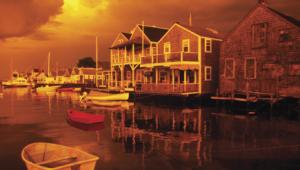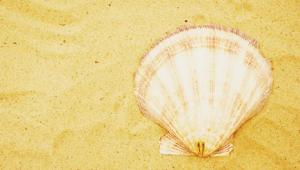The See Cruise; Are You Up For An Ultimate Self-Assignment?
If you’re a regular reader of this column, you might remember I once mentioned that a year after I’d graduated from high school I spent the summer working on a Merchant Marine ship that traveled to Scandinavia, England, and Ireland. It was on that trip that I fell in love with photography (I’d just bought a Minolta SR-T 101) and with travel. In that column I wrote, “I look back at that experience as the root of who I am today.”
 |
|
|
I recently returned from what I can only call an assignment adventure: photographing aboard the Star Clipper, one of the largest, fully rigged sailing ships in the world, and at the ship’s ports of call, producing photos that will be used to promote the company’s cruises. This wasn’t the first time I’ve worked for Star Clippers or sailed aboard one of their ships, but it was the first time I thought about how my life and my work are linked to the sea, and how much that link has taught me about being a travel photographer.
 |
The photos you see here are from that three-week shoot in French Polynesia. The trip was a microcosm of everything that travel photography is about—activities and culture, landmarks and lifestyle, the big picture and the myriad details—and during my adventure I realized that a cruise is the ultimate way for a travel photographer to capture destination images, see and experience multiple locations, and take advantage of the help of knowledgeable and expert support staff who can assist in setting up special excursions, arrange for meetings with local vendors, and suggest the best vantage points for general scenery and specific landmarks.
 |
A cruise is also the crucible of travel photography, a testing and training ground. While there are plenty of photo opportunities—the ports of call are, after all, chosen for their tourist appeal—there are also limitations. You don’t have the time to scout locations or to get to know the people you’d like to photograph. You often don’t have the luxury of picking and choosing your shots. And unless the cruise is set up to get you to the port destination in the early morning and stay until evening, you won’t have the benefit of the golden hours of sunrise and sunset. If you get good travel shots under those conditions, you’ve really accomplished something.
 |
And you can get them because there are great advantages to cruising for images. First, you’ll be in some great places for photography, places with great scenery and landscapes, interesting cities and towns. And you’ve got support from the ship: on-board personnel will know what you should look for, and most cruise lines provide a briefing on the next day’s location, complete with the computer age’s version of a slide show.
Still, you’ll have to be observant and make quick decisions. Bad light? I look for open shade, pop a flash on the camera or use a small reflector. No time to get to know people you want to photograph? I head for the marketplace and take advantage of the fact that people in cruise destinations expect tourists, and photographers, to be taking their picture. I’m always outgoing, friendly, and courteous. I know how to ask permission using only gestures, and I’ve learned that knowing a few words of the local language goes a long way.
 |
If you’re like me, I think you’ll find that you’ll do more photography while on a cruise than you would on a regular vacation trip simply because you won’t have to deal with travel—no boats, planes, ferries, or trains. I quickly discovered that because I wasn’t packing up and journeying to a different hotel every few days, I was doing more photography. On a cruise my traveling takes place while I’m sleeping. I get so much done and keep so busy on a cruise that my cabin often looks like a combination of B&H Photo, Banana Republic, and Target. If your cabin looks like that, you’re doing something right.
If the idea of combining your passion for photography with a cruise appeals to you, here’s a final suggestion: adopt the mindset of a travel photographer, not a tourist. Imagine you’re taking the trip in order to return with a travel photographer’s take: a photo essay, editorial illustrations, even
a commercial assignment.
 |
In other words, create your own assignment adventure.
Those Who Can, Do… And Then They Teach
To test my theory of cruises as perfect venues for travel photography, I’ll be leading a series of photo tours aboard Star Clippers’ sailing ships. I’ll host classes on board and travel with cruise members when they tour the sites. I’m aiming at pro shooters who want to take their skills up a notch and at advanced hobbyists and enthusiasts who want to learn travel photography.
I’m telling you this because you played an important part in my decision. As I began to think about doing this, the first thing I had to figure out was what I’d be talking about and what I’d be showing participants. Then it came to me: it would be all the things I’ve been talking to you about in this column for all these years, the things that are important to me—observing and selecting, dealing with people, making plans, and making the most of opportunities.
If you’d like more information, you can learn about Star Clippers at www.starclippers.com and the workshops at www.tours.jackhollingsworth.com.
Jack Hollingsworth has been globetrotting and shooting his award-winning world photography for over two decades. You can see more of his work at JackHollingsworth.com and follow him on Twitter at www.twitter.com/photojack.
- Log in or register to post comments

















































